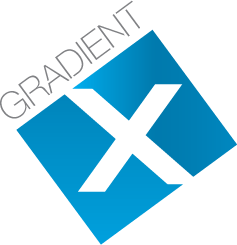Amobee, the mobile advertising company bought last year by SingTel for $321 million, has made an acquisition of its own to build out its platform with more ad-tech features. It has bought Gradient X, a young Los Angeles-based developer of a real-time bidding platform for mobile ads, which only just exited from beta earlier this summer.
The exact price is not being disclosed, but I’ve dug around and understand that it’s in the tens of millions of dollars. Not bad for a startup that had only raised $3.75 million, from backers who included Mark Suster’s Upfront Ventures, Founder Collective, Rincon Venture Partners and many more.
Trevor Healy, the CEO of Amobee, tells me that the acquisition is as much about picking up a product that fills a need at Amobee, as it is about picking up some key talent. That includes CEO Brain Baumgart (formerly chief strategy officer at Adconion Direct), CIO Julie Mattern (co-founder and formerly the chief technologist at the Rubicon Project), and CTO Michael Lum (former head of engineering at OpenX) — all of whom will be joining Amboee, both to work on Gradient X’s existing RTB product and also “to do more work for us in the future.”
“We are excited to join Amobee, which is globally recognized as the leader in mobile marketing,” said Brian Baumgart, CEO of Gradient X, in a statement announcing the deal. “Amobee and Gradient X share a common vision in how to use technology to finally make mobile the most effective marketing channel to reach the right customer, with the right offer, at the right time and place.”
The RTB platform, meanwhile, will mean that Amobee will be able to offer companies the ability to make media buys through multiple channels and formats like video and HTML5, with bidding and pricing marked in real time, and with analytics for improved targeting. The ideal is that this will give media buyers a better return on their spend.
Healy said that acquisition in a way is representative of bigger changes in the mobile ad industry, which follows closely the same evolutions we’ve seen across digital advertising as a whole. Amobee, he says, needs to “keep up with the pace” of how its business is growing. “We’re starting to see a level of sophistication come into the marketplace for mobile ads,” he says. “People in the past had been happy enough to generate smaller revenues while still convincing clients of the medium, but now we see a point where we have to deliver more end-to-end value. And that will grow as more ad dollars go into mobile. Their products will complement our existing publishing assets a lot to help provide a full suite of services to CMO.”
Healy says that although Gradient X is still a very new player — it was still testing its platform with big spenders like Ford — Amobee had been eyeing them up from earlier on, and had a first considered just a partnership. But as they learned more, the more they thought it would be better to take the plunge instead. Maybe because there is so much consolidation underway right now in the mobile ad space, and so it’s even more challenging to be a small startup just opening for business, Gradient X may have felt the same. Still, it doesn’t look like it was a guarantee that Amobee would get it. “It was a coup for Amobee to get this deal done,” says Healy.
Gradient X will remain in LA, and Amobee plans to capitalize on that by setting up a sales office in the city as well.
